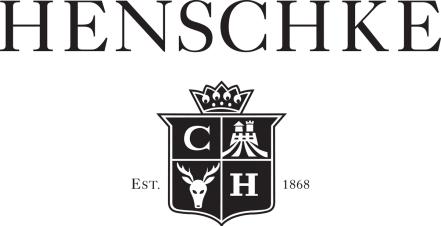Henschke
Keyneton Euphonium
Henschke
Keyneton Euphonium
The Barossa hills village of Keyneton, pioneered by pastoralist Joseph Keynes in 1842, was a musical and cultural focus for the early settlers, and was home to the Henschke Family Brass Band and the Henschke winery. The Henschke Family Band was founded in 1888 by Paul Gotthard Henschke and later led by third-generation Paul Alfred Henschke, and featured wonderful wind instruments such as a B flat euphonium, cornet and E flat clarinet. The B flat euphonium, a large brass wind instrument, was made by the famous Zimmermann factory in Leipzig, Germany, in the late 19th century. The instruments were imported by musical entrepreneur, Carl Engel of Adelaide in the late 1900s and have been lovingly restored and remain in the Henschke family
Wine Production
Matured in 20% new and 80% seasoned French oak hogsheads for 18 months prior to blending and bottling.
Tasting Notes
Deep crimson with garnet hues. Enticing aromas of blackcurrant, blackberry and cassis are enveloped by herbal notes of sage and bay leaf that lead to subtle nuances of red fruits, black pepper, vanilla and cedar. A generous palate offers rich flavours of red and blackcurrant, dried herbs and black pepper, with great purity, balance and texture forming a delicious mouthfeel, while velvety tannins provide great length and complexity.
Food Pairing
Roasted Cowra lamb rack, eggplant, olives and preserved lemon.
The Barossa hills village of Keyneton, pioneered by pastoralist Joseph Keynes in 1842, was a musical and cultural focus for the early settlers, and was home to the Henschke Family Brass Band and the Henschke winery. The Henschke Family Band was founded in 1888 by Paul Gotthard Henschke and later led by third-generation Paul Alfred Henschke, and featured wonderful wind instruments such as a B flat euphonium, cornet and E flat clarinet. The B flat euphonium, a large brass wind instrument, was made by the famous Zimmermann factory in Leipzig, Germany, in the late 19th century. The instruments were imported by musical entrepreneur, Carl Engel of Adelaide in the late 1900s and have been lovingly restored and remain in the Henschke family
Wine Production
Matured in 20% new and 80% seasoned French oak hogsheads for 18 months prior to blending and bottling.
Tasting Notes
Deep crimson with garnet hues. Enticing aromas of blackcurrant, blackberry and cassis are enveloped by herbal notes of sage and bay leaf that lead to subtle nuances of red fruits, black pepper, vanilla and cedar. A generous palate offers rich flavours of red and blackcurrant, dried herbs and black pepper, with great purity, balance and texture forming a delicious mouthfeel, while velvety tannins provide great length and complexity.
Food Pairing
Roasted Cowra lamb rack, eggplant, olives and preserved lemon.
Brand Materials
Vineyard & Production Info
Winemaking & Aging
Analytical Data
About the Vineyard
A traditionally wet winter, mild spring and excellent fruit set provided a great start to the 2015 vintage after four vintages with below average yields. Spring was dry and led into a very mild, dry summer with no disease, resulting in fruit with higher natural acidity, and incredible flavour and colour concentration. It was a dry, warm and windy start to January, with some welcome rain at the end of the month coinciding with the onset of veraison; perfectly timed for the old dry-grown vineyards. Mild weather followed from February through to April providing a fairytale vintage, eventually winding down at the end of April as the rain and cooler temperatures set in.








